This is the fourth of a series of articles detailing significant changes the Technical Committee considered the 2015 Canadian Electrical Code Part I (CE Code). The final meeting for 2015 CE Code changes took place in June of this year. The rules shown in this article are limited to changes adopted by CE Code Technical Committee and are not subject to further changes. It should be noted that until a formal memorandum of revisions to the CE Code is published by the CSA, the information provided in this article is simply based on the observations of the writer.
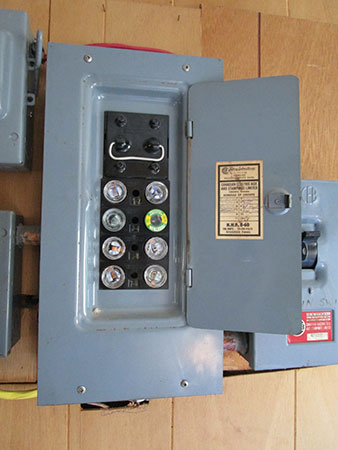
Section 14
Section 14 has only one rule change for the 2015 CE Code in Rule 14-402. The words “because a plug fuse can be safely handled while energized in such a circuit” were removed from Item (c) and replaced with a note in Appendix B explaining why a disconnecting means is not required for a plug fuse where the circuit has only one ungrounded conductor.
Section 18
The changes for Section 18 will be covered in a future article.
Section 20
The title of Rule 20-100 has been changed from “Commercial garages — Repairs and storage” to “Commercial repair garages” deleting the reference to storage; in addition Subrule (3) of Rule 20-102 has been deleted, this is the subrule that detailed the areas within a storage garage that were considered a Class I, Zone 2 location. Along with these changes, Rules 20-200 to 20-206 for Residential storage garages were also deleted. The rationale provided for these changes recognized the historic lack of incidents in storage garages in respect to the electrical installations and acknowledged that the risk of an explosion related to electrical wiring in storage garages is not statistically higher than in other ordinary locations. In addition, these changes will harmonise these area classifications with the National Electrical Code.
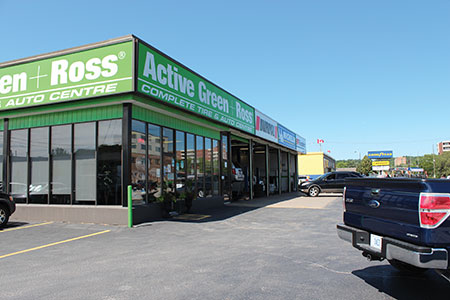
The word “showroom” was also replaced with “adjacent areas” in Subrule (1) of Rule 20-100; this editorial change also allowed the deletion of Subrule (5). As with the 2012 CE Code, adjacent areas are classified as Class I, Zone 2 locations, unless the areas are elevated from a service and repair area by at least 50 mm, or separated from a service and repair area by tight-fitting barriers such as curbs, ramps, or partitions at least 50 mm high.
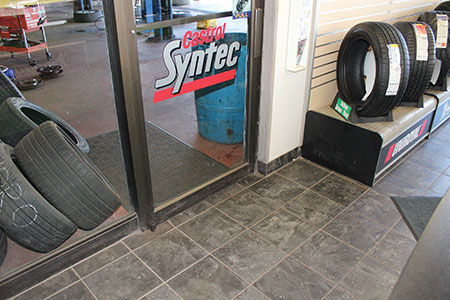
Rule 20-114 covering electric vehicle charging has also been deleted in its entirety as the requirements are now covered in CSA Standard C22.2 No 280-13 Electric vehicle supply equipment.
Section 24
A new Subrule (7) has been added to Rule 24-102; this subrule requires all circuits connected to communication or nurse call equipment installed within a patient care area to be a Class I circuit, and wiring of these circuits is now required to meet the applicable rules of Sections 12 and 16.
New Subrule (7) has also been added to Rule 24-106 requiring that receptacles in a basic care area are not to be of the isolated ground type. This change is to provide consistency between the code and CSA Standard Z32-09 Electrical safety and essential electrical systems in health care facilities.
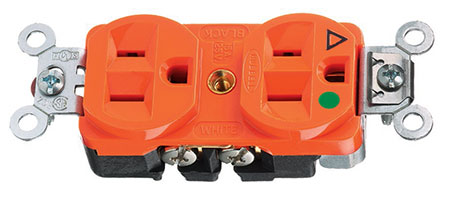
In Rule 24-108 the reference to CSA Standard C22.2 No. 125 was revised to include the CAN/CSA-C22.2 No. 60601 series of standards.
Section 26
Existing Rule 26-702(3) has been expanded to require receptacle covers used in a wet location to be marked “Extra-Duty.” This change is to recognize more stringent testing requirements for receptacle covers suitable for wet locations whether or not a plug is inserted into the receptacle in CSA Standard CSA C22.2 No. 42.1-13.
New Subrule (3) for Rule 26-702 will allow cover plates marked “Wet Location Only When Cover Closed,” or the equivalent, to be used for outside receptacles installed in or located at least 1 m above finished grade and not in a wet location, or where facing downward, at an angle of 45° or less from the horizontal.
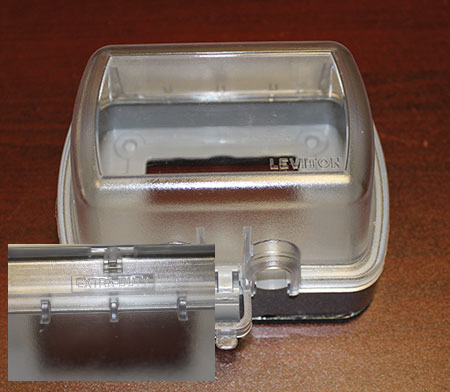
Items (a) and (d)(vi) of Rule 26-712 has been revised removing the allowance of only one duplex receptacle in a dining area forming part of a kitchen. This change will require receptacles in dining areas to meet the spacing requirements for any other finished room in a dwelling unit. In addition, a revision to Item (e) of Rule 26-722 will require the dining area receptacles to be on a branch circuit that does not supply any other outlets.
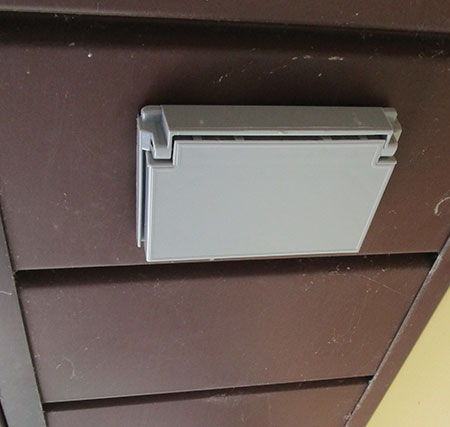
Special Terminology for Arc fault protection, Combination type arc-fault circuit interrupter, and Outlet branch circuit type arc-fault circuit interrupter has been added as Rule 26-720 that reads:
“Arc fault protection — a means of recognizing characteristics unique to both series and parallel arc faults and de-energizing the circuit when an arc-fault is detected.”
“Combination type arc-fault circuit interrupter — a device that provides both series and parallel arc fault protection to the entire branch circuit wiring including cord sets, and power supply cords connected to the outlets, against the unwanted effects of arcing.”
“Outlet branch circuit type arc-fault circuit interrupter — a device that provides both series and parallel arc fault protection to downstream branch circuit wiring, cord sets, and power-supply cords against the unwanted effects of arcing and also provides series arc fault protection to upstream branch circuit wiring.”
Item (f) of Rule 26-722 covering arc fault protection for branch circuits supplying receptacles has been revised to clarify that the requirements only apply to branch circuits that supply receptacles rated 125 volts and 20 A or less. The Item also replaced the words “arc-fault circuit interrupter” with “combination type arc-fault circuit interrupter” recognising this new type of arc fault protection. In addition the circuits requiring the arc fault protection have been expanded from branch circuits that supply receptacles installed in sleeping facilities of a dwelling unit to all receptacles for a dwelling unit except branch circuit supplying receptacles installed in a bathroom or washroom located within 1 m of a wash basin, receptacles installed in a kitchen for a refrigerator, counter receptacles installed along the wall, on fixed islands and peninsular counters, and branch circuits that only supply single receptacles installed for a sump pump provided the sump pump receptacle is identified as a sump pump receptacle.
As an alternative to installing breaker style combination type arc-fault circuit interrupters, new Item (g) will allow an outlet branch circuit type arc-fault circuit interrupter to be installed at the first branch circuit outlet provided a metal raceway, armoured cable, or non-metallic conduit or tubing is used as the wiring method from the panelboard to the first outlet where the outlet branch circuit type arc-fault circuit interrupter is installed. This means non-metallic sheathed cable will not be allowed to supply the first outlet on the branch circuit where the arc fault protection is an outlet branch circuit type arc-fault circuit interrupter.

With the new Rule 26-720 added for Special Terminology, existing Rule 26-724 has been renumbered as 26-726.
Rule 26-750 “Installation of storage-tank water heaters,” Rule 26-752 “Infrared drying lamps,” Rule 26-756 “Induction and dielectric heating equipment,” Rules 26-760 and 26-762, and Subsection heading “Bare element water heaters” have all been deleted as the requirements have been moved to Section 62.
Section 28
In Rule 28-200 a new Item has been inserted between Items (c) and (d) to recognize the use of self-protected combination motor controllers as motor branch circuit protection.
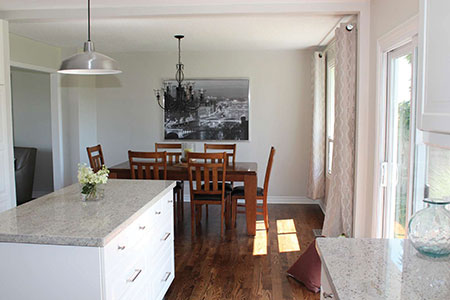
A new Rule 28-212 has been added to Section 28 allowing semiconductor fuses to be used in adjustable speed drive systems provided that the semiconductor fuses are integral to an approved controller. This change is a result of new CSA Standard C22.2 No. 274-13 Adjustable speed drive systems, that now recognizes semiconductor fuses used for additional drive protection. Keep in mind the semiconductor fusing is not a substitute for the motor branch circuit protection required by Rule 28-200(a).
Rule 28-602 will see two changes to address possible misapplication of manual motor controllers used for air conditioning, refrigeration, or heating equipment. The first change is the addition of Item (3) (b)(iii) that will not allow the use of manual motor controllers where equipment contains overcurrent protection, and specifically requires the motor controller to be adequately rated. The second change is the addition of a new Subrule (5) requirement for the manual motor controllers to be suitable for the environment, and a requirement that the conduit be drained and sealed in accordance with Rule 22-302 where a conduit is used as part of the wiring methods to the disconnecting means located in the enclosure.

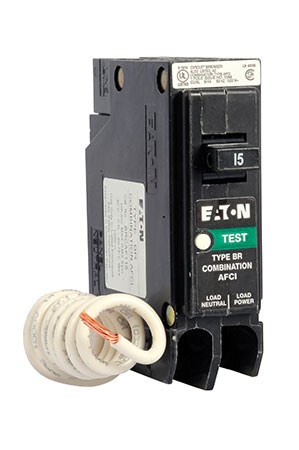
Section 30
Rule 30-406 has been rewritten covering the arrangement of exposed wiring on suspended luminaires. This new wording will require exposed wiring to be arranged so that neither the suspension means nor the weight of the luminaire places tension on the wiring or on the connections.
Section 32
Section 32 has two changes for the 2015 CE Code. The first change is the insertion of a new Subrule (2) for Rule 32-100 that permits the use of data communication links between fire alarm control units and transponders as described in ULC S524. The second change is to Rule 32-108 covering current power supplies. Subrule (1) has been re-written requiring a separate circuit for a fire alarm power supply, and an inserted new Subrule (2) that allows a separate branch circuit not required to be as close as practicable to the service box, for where a fire alarm system includes more than one control unit or transponder. The main reasons for these changes was to acknowledge the difficulty of installing a 15-amp overcurrent device as close as practicable to the load terminals of the service box when the main service is a large distribution switchboard, and to recognize that fire alarm systems are electrically supervised and have a built-in standby power supply with audible and visual trouble devices that would be energized for days from the standby power within the fire alarm system in the event the fire alarm branch circuit overcurrent device operated.
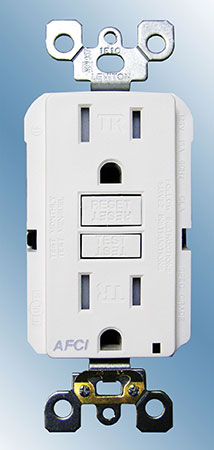
Section 34
To correct an inconsistency between Items (c) and (d) of Rule 34-100 regarding the location and lockability of the disconnection means for a sign, Item (d) has been replaced as a new Subrule (2). This rule will still allow the disconnecting means to be located out of the line of sight or more than 9 m from the sign, provided that the disconnecting means is capable of being locked in the open position.
Section 36
Rule 36-302(1)(a) has been revised deleting the requirement that the driven ground rods for station grounding be not less than 3 m long and 19.0 mm in diameter. The rationale for this deletion was to recognize that the dimensions in the rule were inconsistent with CSA Standard 41 Grounding and Bonding Equipment that covers ground rods, and the requirement in existing Rule 36-304 requires the maximum permissible resistance of the station ground electrode regardless of the size of ground rods used. Item (a) will continue to require a minimum of four driven ground rods spaced at least the rod length apart and located adjacent to the equipment to be grounded where practicable.
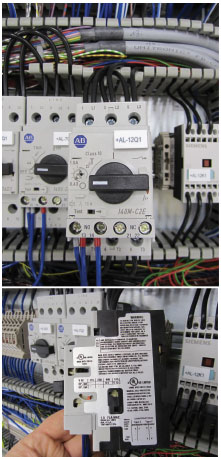
Section 46
A new Subrule (4) has been added to Rule 46-400 covering illumination of exit signs. In this new subrule the luminaires used to illuminate photo luminescent exit signs (exit signs that are not connected to an electrical circuit) are to be connected in compliance with Subrules (1) to (3). This means the luminaires used to illuminate photo luminescent exit signs must be also illuminated by an emergency power supply where emergency lighting is required by the National Building Code of Canada, and connected to a circuit that is used for no other purpose or connected to a circuit supplying emergency lighting in the area where these exit signs are installed.
Sections 62 and 64
The changes for Sections 62 and 64 will be covered in a future article.
Section 66
The Scope of Section 66 limits the section to temporary installations and expands the power supplies from generators only to any source of electrical supply. The list of installations the section applies to has also been expanded from amusement parks, midways and carnivals, to include fairs, film /television or radio productions, remote broadcasting or recording locations, live performance and entertainment events, touring shows and productions, concerts, sporting events, trade shows, and similar events.
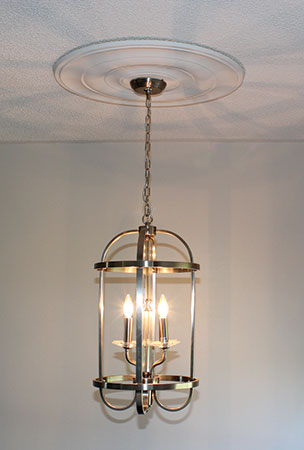
Rule 66-200 has a new Subrule (3) detailing the type of grounding conductor to be used for a mobile generator. This new requirement will limit the number of in-line single-pin connections to no more than two; and will limit the total length of the ground conductor to a maximum of 50 m, run in a direct shortest practicable route, with a minimum No. 4 AWG conductor that is to be dedicated to the mobile generator.
Section 68
To be consistent with the rest of the CE Code the reference to ground fault circuit interrupters has been changed to clarify that the objective of this requirement is to use Class A ground fault circuit interrupters in Rules 68-068, 68-100, and 68-202.
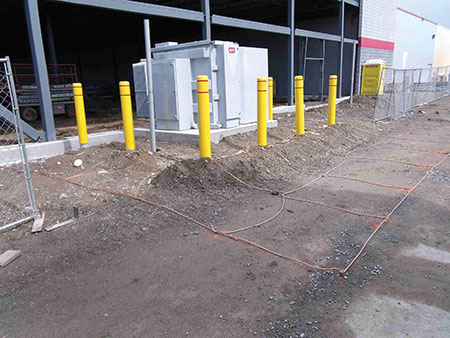
Section 74
In Section 74 the special terminology changed from “ground anchor” to “mounting stake” that reads: an angle iron, section of rigid galvanized steel conduit or other metallic post set into the ground for the purpose of supporting an elevated light fixture; and the term “pull pit” was changed to “transformer housing” to read: a below-grade junction box used as a cable pulling point, to house transformers or series lighting cable splices. In addition Rules 74-004, 74-010 changed to line up with the new special terminology.
In Rule 74-004 the reference to the 6.6 A was removed from Subrules (1), and (5) to allow for LED type luminaires for runway lighting. The maximum loading of the series system is now limited by the markings of the transformer used for the series systems.
Section 86
The special terminology definition for “Electric vehicle charging equipment” was deleted and replaced with a definition for “Electric vehicle supply equipment” that reads: “a complete assembly consisting of conductors, connectors, devices, apparatus, and fittings installed specifically for the purpose of power transfer and information exchange between the branch circuit and the electric vehicle (see Appendix B).”
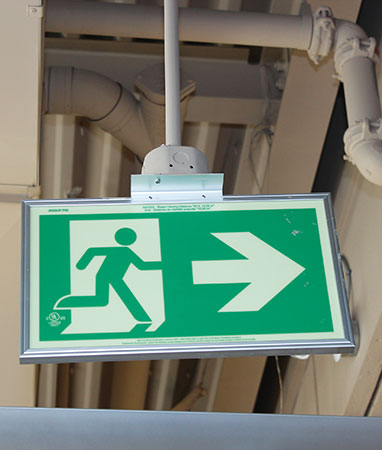

The definition for “Electric vehicle (see Appendix B)” was revised to read:
“an automotive-type vehicle for use on public roads that
(a) includes automobiles, buses, trucks, vans, low-speed vehicles, motorcycles, and similar vehicles, powered by one or more electric motors that draw current from a fuel cell, photovoltaic array, rechargeable energy storage system (such as a battery or capacitor), or other source of electric current; and
(b) includes plug-in hybrid electric vehicles (PHEV); and
(c) excludes off-road electric vehicles, such as industrial trucks, hoists, lifts, transports, golf carts, airline ground support equipment, tractors, and mobility scooters for persons with disabilities.”
The definition for “Electric vehicle connector” was revised to read: “a device that, when electrically coupled to a mating device on the electric vehicle, establishes means for power transfer and information exchange between an electric vehicle and electric vehicle supply equipment.”
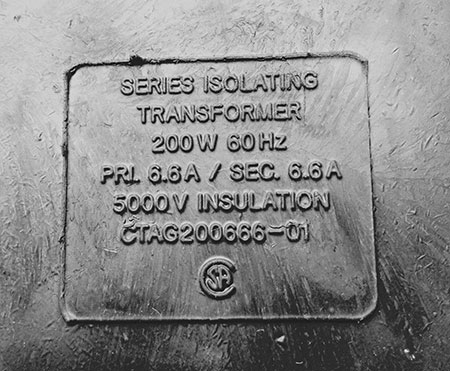

The definition for “Electric vehicle inlet” was deleted, and a new definition for plug-in hybrid vehicle was added to read: “Plug-in hybrid electric vehicle (PHEV) – A type of electric vehicle having an additional energy source for motive power.”
With these special terminology changes Rules 86-300 and 86-306, have seen editorial changes to align with the revised definitions.
Rule 86-300 also has two new subrules to address circuit loading by referring code users to Section 8 and to permit the electric vehicle supply equipment to be connected on a branch circuit supplying other loads provided with control equipment that prevents simultaneous operation of the electric vehicle supply equipment with other circuit loads to prevent the calculated demand of the circuit from being exceeded.
The hazardous location requirements in Rules 86-308, 86-400, and 86-404 were replaced with a new Rule 86-404 that indicates electrical vehicle supply equipment and the supply connections located in a hazardous location must conform to the hazardous location requirements in the CE Code.











Find Us on Socials